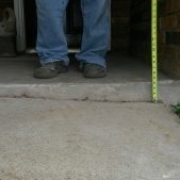The Basics of Mudjacking an Uneven Pavement
Mudjacking Basics
When faced with a sinking sidewalk, set of steps, patio or foundation, most homeowners will resort to tearing down the slab and having a new one poured. This requires a great deal of money and is a time consuming and labor intensive process. Mudjacking has emerged as a great substitute to slab replacement. It involves the lifting of the sunken slab by pumping slurry under it to bring it to level ground. It is fast and more affordable.
Why Your Slab is Sinking
Concrete slabs sink when the support beneath them gives way. This can be caused by a variety of reasons including the following:
-
Poor compaction of soil under the slab
Proper compaction of soil is required before the installation of a slab. This ensures that the slab has the support it needs. If the soil is not properly compacted, the slab will press down on it when it is installed due to its weight. This results in sinking of the slab.
-
Erosion of the soil
Soil under the slab provides the slab above with support. This soil can be eroded when exposed to water. This results in the slab sinking unevenly.
-
Settling of soil
Settling of soil is a natural process. It occurs as a result of the weight of the concrete slab acting on the soil. This process can take years depending on the type of soil in the area.
No matter what causes the slab to sink, it is important for the defect to be addressed as soon as possible. It could otherwise result in serious problems with other related structures e.g. settling foundations can cause failure in structural walls and therefore result in an unsafe environment in the home.
How Mudjacking Can Help
This process involves lifting the concrete slab by pumping slurry underneath it. The process is fairly simple and fast. Small holes are drilled into the slab and slurry is pumped through the holes. The composition of the slurry varies depending on the circumstances and the preferences of the contractor. In many cases, slurry includes limestone, bentonite clay, cement, sand, an expanding polymer and water.
As the slurry is pumped under the slab, the slab begins to rise. When it becomes even, the holes are filled with cement to seal them. The slab is left to cure for 24 hours depending on the slurry mixture. The result is an even slab without the need of replacing it.
